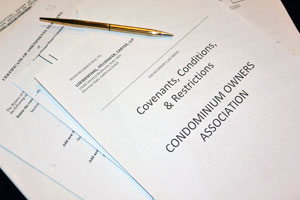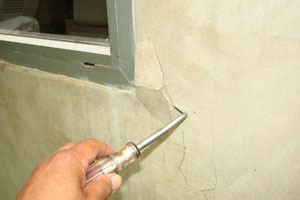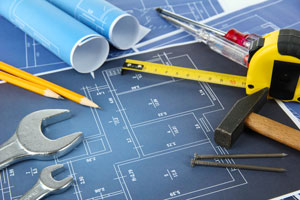LHC Newsletter Vol. 5, No. 3
“Protecting Your Investment: Steps to Take to Avoid Being Underinsured”
Your home, like most Californians’, is your life’s most expensive purchase. Consequently, the protection of such a valuable asset requires you to regularly review your homeowners or condominium owners insurance to ensure it is updated to include improvements, major purchases and increased rebuilding costs. This is especially true now that the second half of the year is upon us, where summer heat and dryness lead to increased vulnerability to wildfires, and fire damage leads to increased vulnerability to floods and mudslides.
As part of your regular policy review to ensure your home or condominium is properly insured, you should ask yourself the following three key questions:
- Do I have enough insurance to rebuild my home in the event of loss or disaster?
- Do I have enough insurance to replace all of my possessions in the event of loss or disaster?
- Do I have enough insurance to protect my assets?
Deconstructing your home insurance policy into these three essential areas of coverage (your house, your possessions and any possible liability to others) makes it easier to ensure you have the appropriate coverage.
Do I have enough insurance to rebuild my home?
To determine how much insurance to purchase to cover your home, think about the cost of rebuilding after a loss at current construction costs. Do not include the cost of the land, and do not base your rebuilding costs on the price you paid for your home. The cost of rebuilding could be more or less than the price you paid for your home or could sell it today. To arrive at the proper coverage amount, think about your home’s age, size, condition, and location and realize that just as home prices fluctuate, so too do replacement costs.
For a quick estimate of the amount of insurance you need, multiply the total square footage of your home by the local building costs per square foot – in Southern California, that amount generally ranges from $150 to $450, depending on your specific locality and the quality of your finishes. To find out construction costs in your particular community, call your local real estate agent, builders association or insurance agent.
When a loss covered under a homeowners policy occurs, the loss can be paid on either an actual cash value (“ACV”) basis or on a replacement cost (“RC”) basis. When ACV is used, you are entitled to the depreciated value of the damaged property – so the older the item is, the less money you may receive for it. Under RC coverage, you are reimbursed for the actual cost of replacing your home or possessions (no deduction for depreciation) up to the limit of your policy. Commonly, RC policies have an additional endorsement, Extended Replacement Cost Coverage (“ERC”), available for purchase. The ERC endorsement can raise the dwelling coverage limits beyond the amount specified on the Declarations page, typically 125% to 150% of the amount stated in that document.
Another area of concern relative to covered losses and rebuilding is building code upgrades. Such elements apply to the performance of repairs and/or the replacement of damaged property and/or the installation of building materials so as to conform to current and applicable building standards. These are articulated either in the Uniform Building Code or the local Building Code at the time of the repair. Because building codes set the standards for construction, they are updated periodically and may have changed significantly since your home was built. Thus, if your home is badly damaged, you may be required to rebuild your home to meet new building codes. Generally, homeowners insurance policies will not pay for the extra expense of rebuilding to code. However, many insurance companies offer homeowners the ability to purchase an endorsement, typically called an Ordinance or Law Endorsement, that pays a specified amount toward these costs- usually 10% of your dwelling limits – for a relatively low additional premium.
Other additional coverages to think about (for additional premiums) include: Water Back-Up and Flood or Earthquake insurance. Water Back-Up insurance protects your property against damage caused by the back-up of sewers or drains. For information about flood insurance, visit the federal government’s National Flood Insurance Program website: www.floodsmart.gov ; for earthquake zone information, visit www.usgs.gov/hazards/earthquakes . Contact your insurance agent or company representative about purchasing flood and/or earthquake coverage, depending upon the area in which you live.
Do I have enough insurance to replace all my possessions?
Most homeowners insurance policies provide coverage for your personal possessions for approximately 50% to 70% of the amount of insurance you have on the structure of your home. This means that if you have $100,000 worth of coverage on the structure of your home, you would be covered for $50,000 to $70,000 worth of personal items. The best way to determine if this is enough coverage is to conduct a home inventory. This is a detailed list of everything you own and the estimated cost to replace these items if they are stolen or destroyed by a disaster.
Additionally, like the structure portion of your policy, you can choose between RC and ACV policies to protect your personal property. To illustrate the difference between the two types of policies, suppose as an example: a fire destroys a 10-year-old TV set in your living room. If you have a RC policy for the contents of your home, the insurance company will pay to replace the set with a comparable new one. If you have an ACV policy, it will pay only a percentage of the cost of a new TV set because the TV has been used for 10 years and is worth a lot less than its original cost.
Do I have enough insurance to protect my assets?
In regards to the sections of your policy concerning liability to others, most homeowner’s insurance policies provide a minimum of $100,000 worth of liability insurance, but higher amounts are available. Increasingly, experts recommend that homeowners consider purchasing at least $300,000 to $500,000 worth of liability protection coverage. In addition, Umbrella or Excess Liability policies can be purchased separately to provide higher limits of protection for all of your assets and to offer broader coverage. Thus, if you own property and/or have investments and savings that are worth more than the liability limits of your policy, you should consider purchasing an excess liability or umbrella policy. The cost of an umbrella or excess policy depends on how much your underlying limits of insurance are and the kind of risk you represent – multiple homes, cars, teen drivers, boats, etc. Commonly, insurers require a minimum limit for your Personal Liability of $300,000; for Auto of $250,000 per person/$500,000 per occurrence for Bodily Injury; and $100,000 for Property Damage or a combined Single Limit of $500,000 before they will offer an Umbrella Policy for a $1,000,000 Umbrella with home, two cars, two drivers and no teens, the premium will cost approximately$150 to $250 per year.
Is my condominium protected?
Many condominium owners are under the mistaken impression that their homeowners association’s master insurance policy will cover their personal property when loss occurs. This is usually not the case, and condominium owners should purchase their own insurance to provide coverage for their actual losses.
The association’s insurance coverage is based upon the requirements of the governing documents (CC&R’s and/or Bylaws) and typically insures for property damage to the association’s buildings and property, general liability insurance for the common areas, theft and dishonesty insurance, and directors’ and officers’ liability insurance. The property damage coverage under the master insurance policy is typically limited to replacing the structure of the building and those items that were conveyed to the original owner at the time the condominium unit was transferred from the developer (i.e.: original floor coverings, bathroom fixtures, kitchen cabinets, appliances, etc.). It is important to note that most developers install contractor grade appliances, fixtures and floor coverings at the time of construction, and it is that at that quality level that such items will be replaced under the master policy. If you upgraded your major appliances, etc. with better ones, you need additional insurance to cover the difference in cost. More often than not – none of your personal items (furniture, artwork, televisions, etc.) are covered under the association’s master insurance policy.
Some associations are only required to insure the “Bare walls”, usually defined as the sheetrock or drywall. That means that as the owner, you should have insurance the covers wall and floor coverings, including wallpaper and paint. Other associations are responsible for insuring the structure, which is usually defined as the studs and framing of the walls. In that case the owner’s insurance would need to cover the sheetrock or drywall.
In the case of a major flood or fire where you are unable to live in your unit while it is under reconstruction, you will have to pay to live somewhere else while continuing to pay your condominium assessments and mortgage. Reconstruction could take several months and the additional living expense can be a significant financial burden. The master policy will not pay these expenses; thus, you need additional insurance to cover these costs.
As to liability, the association’s liability insurance generally provides coverage for injuries sustained in the common areas. If an injury occurs in your unit, the association’s insurance will typically not provide coverage. You need to have additional insurance to cover yourself if you are sued due to injury or damage to someone else or their property. Furthermore, if a contractor you employ, or you yourself, while making a repair to your unit causes a fire, flood or other damage, you may be held responsible for paying the association’s deductible as well as the cost to repair your unit if the association’s insurance denies coverage. In these cases, you need additional insurance to help you over the financial hurdle. Loss assessment insurance will take care of both the association’s deductible and non-covered claim issues, less your own policy’s deductible.
In summation, a regular policy review and an update of your coverages will help you to ensure that you are fully protected in the event of loss to your home, condominium or personal property.
©2011 by Loewenthal, Hillshafer & Carter, LLP. All rights reserved. Permission is granted to reproduce or transmit in any form any part of this newsletter as long as proper attribution to Loewenthal, Hillshafer & Carter, LLP is given. Due to the rapidly changing nature of the law, information contained in this publication may become outdated. As a result, lawyers and all others using this material must research original sources of authority.


